Table of Contents
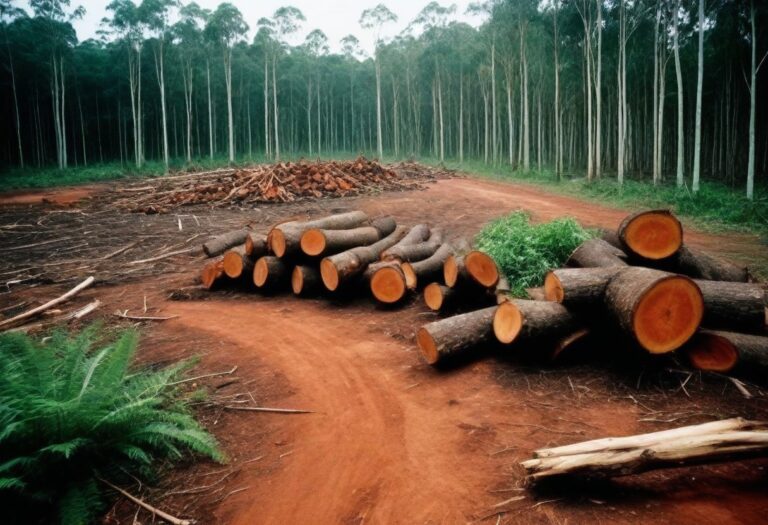
Consequences of Deforestation: Unravelling the Environmental Impact
Explore the profound consequences of deforestation on our environment, from loss of biodiversity to socio-political repercussions. Learn about mitigation strategies and the importance of global collaboration in combating this pressing issue.
Introduction
Deforestation, the deliberate clearance of forests, has emerged as one of the most pressing environmental challenges of our time. Its consequences extend far beyond the immediate loss of trees, impacting biodiversity, climate stability, soil health, water cycles, economies, and even human health. In this comprehensive article, we delve into the multifaceted environmental impact of deforestation, shedding light on its intricate interconnections and exploring potential mitigation strategies.
Loss of Biodiversity
Impact on Flora and Fauna

Deforestation leads to the destruction of habitats for countless species, pushing many to the brink of extinction. Forests are home to diverse ecosystems teeming with life, from towering trees to microscopic organisms. The removal of these habitats disrupts intricate ecological networks, jeopardizing the survival of numerous plant and animal species.
Disruption of Ecosystems
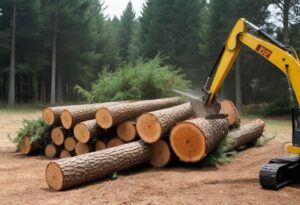
The intricate balance of ecosystems relies on the presence of various plant and animal species. Deforestation disrupts this balance, leading to cascading effects throughout entire ecosystems. The loss of key species can trigger a domino effect, ultimately resulting in ecosystem collapse and the loss of invaluable ecological services.
Climate Change

Contribution to Greenhouse Gas Emissions
Forests play an important role in mitigating climate change by absorbing carbon dioxide from the atmosphere.. However, deforestation releases stored carbon back into the air, contributing significantly to greenhouse gas emissions. The clearing and burning of forests, particularly in tropical regions, are major drivers of carbon emissions, exacerbating the climate crisis.
Alteration of Local and Global Climate
The removal of forests alters local and regional climate patterns, leading to changes in temperature, precipitation, and weather extremes. Deforested areas experience increased temperatures, decreased rainfall, and heightened vulnerability to natural disasters such as droughts and floods. Furthermore, the loss of forests disrupts global climate systems, amplifying the frequency and intensity of extreme weather events worldwide.
Soil Degradation

Erosion and Loss of Fertility
Forests play a crucial role in maintaining soil stability and fertility. Their intricate root systems bind soil particles together, preventing erosion and nutrient loss. However, deforestation exposes soils to erosion by wind and water, leading to the depletion of essential nutrients and the degradation of arable land. Without adequate tree cover, soils become prone to erosion, rendering them unsuitable for agriculture and other forms of land use.

Increased Risk of Landslides and Flooding
The loss of forest cover increases the susceptibility of landscapes to landslides and flooding. Trees act as natural barriers, absorbing excess rainfall and stabilizing steep slopes. Deforested areas are more prone to soil erosion, leading to the accumulation of sediment in rivers and streams. This sedimentation can exacerbate flooding downstream, posing risks to human settlements and infrastructure.
Water Cycle Disruption
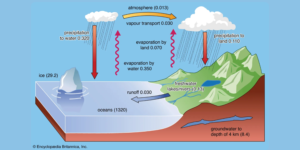
Impact on Local and Regional Hydrology
Forests play a critical role in regulating the water cycle, influencing precipitation patterns and groundwater recharge. Deforestation disrupts these hydrological processes, leading to altered water flow and availability. The removal of trees reduces evapotranspiration rates, leading to decreased moisture in the atmosphere and altered rainfall patterns. This disruption of the water cycle can have far-reaching consequences for both natural ecosystems and human communities.
Decreased Water Quality
Deforestation can also lead to deterioration in water quality, as sediment, nutrients, and pollutants are washed into water bodies from exposed soils. Without the natural filtration provided by forests, contaminants can enter streams, rivers, and lakes, compromising water quality and posing risks to aquatic ecosystems and human health. Moreover, deforestation can exacerbate water scarcity in regions already facing water stress, further exacerbating environmental and social challenges.
Economic Implications
Loss of Ecosystem Services
Forests provide a wide range of ecosystem services essential for human well-being, including carbon sequestration, water filtration, and soil conservation. However, deforestation undermines these services, leading to a decline in natural capital and increasing economic costs. The loss of forests diminishes the resilience of ecosystems, making them more vulnerable to environmental degradation and resource depletion.
Impact on Agriculture and Food Security
Deforestation can have significant impacts on agricultural productivity and food security, particularly in regions where subsistence farming relies on forest resources. The conversion of forests to agricultural land reduces biodiversity, disrupts local climate patterns, and degrades soil quality, ultimately compromising agricultural yields. Moreover, deforestation can lead to the loss of traditional knowledge and practices associated with sustainable land management, further exacerbating food insecurity in vulnerable communities.
Health Risks


Respiratory Issues due to Air Pollution
The clearing and burning of forests release vast quantities of smoke, particulate matter, and other pollutants into the air, posing serious risks to human health. Exposure to forest fires and deforestation-related air pollution can exacerbate respiratory conditions such as asthma and bronchitis, particularly in communities living near affected areas. Children, the elderly, and individuals with pre-existing health conditions are particularly vulnerable to the adverse effects of air pollution, highlighting the urgent need for measures to mitigate deforestation-related health risks.
Vector-Borne Diseases
Deforestation can also increase the risk of vector-borne diseases by altering the habitats and behaviors of disease vectors such as mosquitoes and ticks. The removal of forests can create fragmented landscapes that favor the proliferation of disease-carrying organisms, increasing the likelihood of disease transmission to humans and wildlife. Furthermore, deforestation can disrupt natural predator-prey relationships, leading to an increase in vector populations and the spread of infectious diseases such as malaria, dengue fever, and Lyme disease.
Socio-Political Consequences
Indigenous Communities and Land Rights
Indigenous peoples and local communities often depend on forests for their livelihoods, cultural identity, and spiritual well-being. However, deforestation threatens their traditional lands and resource rights, undermining their socio-economic and cultural resilience. The loss of forests can lead to the displacement of indigenous communities, loss of traditional knowledge, and erosion of cultural practices, further marginalizing already vulnerable populations.
Conflict Over Resources
Deforestation can also exacerbate social tensions and conflicts over land and natural resources. Competition for dwindling forest resources, such as timber, minerals, and land for agriculture, can escalate into disputes between different stakeholder groups, including local communities, governments, and commercial interests. Moreover, the unequal distribution of benefits and costs associated with deforestation can exacerbate socio-economic inequalities and perpetuate social injustices, undermining efforts to achieve sustainable development and peace.
Forest Fires
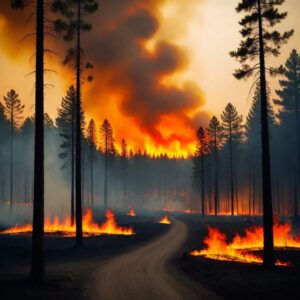
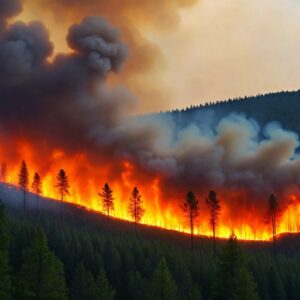
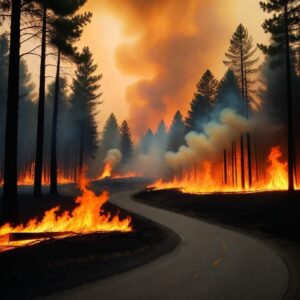
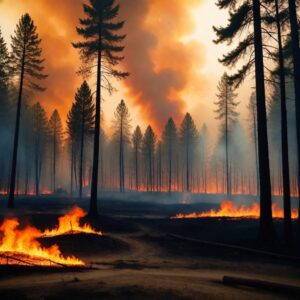
Increased Frequency and Severity
Deforestation increases the risk of forest fires by creating conditions conducive to fire ignition and spread. The removal of trees reduces the natural firebreaks that can help contain wildfires, allowing them to spread more rapidly and extensively. Moreover, deforested areas are often left vulnerable to wildfires due to the accumulation of flammable vegetation and the drying out of soils. Climate change exacerbates this risk by creating hotter, drier conditions that are more conducive to fire ignition and spread.
Loss of Carbon Sink Capacity
Forest fires release vast amounts of carbon stored in trees and soil into the atmosphere, contributing to greenhouse gas emissions and exacerbating climate change. The loss of forests as carbon sinks further amplifies the climate crisis, leading to a dangerous feedback loop that accelerates global warming and environmental degradation. Furthermore, the loss of forest cover reduces the capacity of ecosystems to sequester carbon, undermining efforts to mitigate climate change and transition to a low-carbon economy.
Mitigation Strategies
Reforestation and Afforestation
Reforestation and afforestation initiatives play a crucial role in mitigating the environmental impact of deforestation by restoring lost forest cover and enhancing carbon sequestration. By planting trees on degraded lands, restoring natural habitats, and implementing sustainable land management practices, reforestation efforts can help reverse the ecological damage caused by deforestation and promote biodiversity conservation. Afforestation projects involve planting trees on land that has not been forested in recent history, such as degraded grasslands or abandoned agricultural fields, to create new forests and expand existing forested areas.
Sustainable Logging Practices
Promoting sustainable logging practices can help reduce the environmental impact of deforestation by ensuring that timber extraction is carried out in a manner that minimizes ecological damage and promotes forest regeneration. Sustainable logging practices include selective harvesting, reduced-impact logging, and forest certification schemes that promote responsible forest management and conservation. By balancing economic development with environmental conservation, sustainable logging practices can help reconcile competing interests and promote the long-term sustainability of forest resources.
International Policies and Agreements
Role of International Organizations in Combatting Deforestation
International organizations play a crucial role in combatting deforestation by developing and implementing policies, programs, and initiatives aimed at promoting forest conservation and sustainable land use. Organizations such as the United Nations, the World Bank, and the International Union for Conservation of Nature (IUCN) work with governments, civil society, and the private sector to address the root causes of deforestation, strengthen forest governance, and mobilize financial and technical resources for forest conservation and restoration efforts.
Effectiveness of Forest Protection Policies
While international policies and agreements have made significant strides in addressing deforestation, their effectiveness depends on strong political will, robust enforcement mechanisms, and meaningful stakeholder engagement. Policies such as REDD+ (Reducing Emissions from Deforestation and Forest Degradation) aim to incentivize forest conservation and sustainable land management practices through financial incentives and capacity-building support. However, challenges such as corruption, weak governance, and competing land-use interests continue to hinder progress in combatting deforestation and promoting sustainable development.
Local Community Involvement
Community-Based Conservation Initiatives
Empowering local communities to actively participate in forest conservation and management can enhance the effectiveness and sustainability of conservation efforts. Community-based conservation initiatives involve engaging local stakeholders in decision-making processes, supporting traditional resource management practices, and providing incentives for sustainable livelihoods. By recognizing the rights and responsibilities of local communities, these initiatives can foster a sense of ownership and stewardship over forest resources, leading to more effective conservation outcomes and improved social well-being.
Empowering Indigenous Knowledge and Practices
Indigenous peoples possess valuable knowledge and practices that have sustained forest ecosystems for generations. By respecting and incorporating indigenous perspectives into conservation planning and decision-making, we can benefit from their traditional ecological knowledge and enhance the resilience of forest ecosystems. Empowering indigenous communities to manage their ancestral lands according to their customary laws and practices can help preserve biodiversity, protect cultural heritage, and promote sustainable development.
Future Outlook
The future of our planet depends on our ability to address the root causes of deforestation and promote sustainable alternatives that balance economic development with environmental conservation. Despite the daunting challenges we face, there is reason for optimism. Advances in technology, policy innovation, and grassroots activism offer promising avenues for tackling deforestation and building a more sustainable future for generations to come. By working together across borders and sectors, we can harness the power of collective action to safeguard forests, protect biodiversity, and secure a livable planet for all.
Frequently Asked Questions (FAQs)
Q: What are the main causes of deforestation?
Deforestation is primarily driven by agricultural expansion, logging, infrastructure development, and urbanization. These activities often result in the clearance of large areas of forests for land conversion and resource extraction.
Q: How does deforestation contribute to climate change?
Deforestation releases carbon dioxide stored in trees and soil into the atmosphere, contributing to greenhouse gas emissions and global warming. It also reduces the capacity of forests to sequester carbon, exacerbating the climate crisis.
Q: What are the economic implications of deforestation?
Deforestation can lead to the loss of ecosystem services, such as carbon sequestration, water regulation, and soil fertility, resulting in economic costs for communities and societies. It can also impact agricultural productivity, food security, and livelihoods, particularly in forest-dependent regions.
Q: How can individuals contribute to combating deforestation?
Individuals can contribute to combating deforestation by supporting sustainable consumption practices, reducing waste, advocating for forest conservation policies, and supporting organizations working on reforestation and conservation initiatives.
Q: What role do international organizations play in addressing deforestation?
International organizations play a critical role in developing and implementing policies, programs, and initiatives aimed at promoting forest conservation and sustainable land use. They work with governments, civil society, and the private sector to address the root causes of deforestation and mobilize resources for conservation efforts.
Q: How can indigenous knowledge and practices contribute to forest conservation?
Indigenous peoples possess valuable knowledge and practices that have sustained forest ecosystems for generations. By respecting and incorporating indigenous perspectives into conservation planning and decision-making, we can benefit from their traditional ecological knowledge and enhance the resilience of forest ecosystems.
Our Social Media Handles
Check out more informational Blogs:-
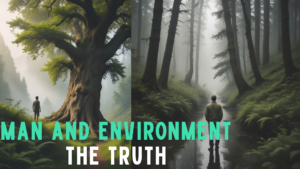


Addressing Controversies Surrounding NEET 2024: Insights from the Ministry of Education

“How to Create Interest in Maths: Unlocking the Magic of Numbers”


